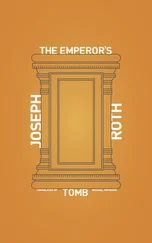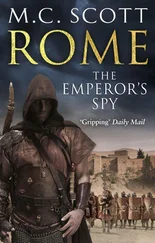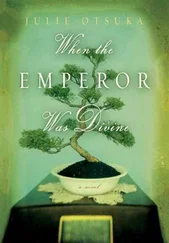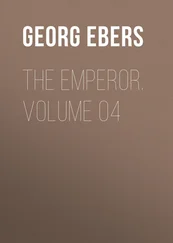Without waiting to see whether the weapon was going to be used, the three men, following their training and instinct, opened fire together. Three streams of bullets, perhaps 150 rounds in all, sliced across the figure, which tumbled backwards into the grass.
In the silence that followed, Rourke realized that the victim was not dead. There was a moan.
The noise of the shooting would have carried over a mile in the still air. He paused only for a moment.
‘Wait one,’ he said.
He walked towards the stricken guerrilla. It was a girl. She had been all but severed across the stomach. He caught a glimpse of her face. She was perhaps fifteen or sixteen, a mere messenger, probably with no experience of warfare, little training and no English. He shot her through the head.
He would have been happy to make it his war; he would have been happy to risk his life for a country that wasn’t his; but he was not happy to lose. The place was going to the blacks anyway. So when they offered to extend his contract, when they showed him the telex from Hereford agreeing that he could stay on if he wished, he told them: thanks, but no thanks. There was no point being here any more.
Now he was going home, for a month’s R and R, during which time he fully intended to rediscover a long-forgotten world, the one that lay beneath Lucy’s white coat.
The clock on the Royal Exchange in the heart of the City of London struck twelve. Two hundred yards away, in a quiet courtyard off Lombard Street, equidistant from the Royal Exchange and the Stock Exchange, Sir Charles Cromer stood in his fifth-floor office, staring out of the window. Beyond the end of the courtyard, on the other side of Lombard Street, a new Crédit Lyonnais building, still pristine white, was nearing completion. To right and left of it, and away down other streets, stood financial offices of legendary eminence, bulwarks of international finance defining what was still a medieval maze of narrow streets.
Cromer, wearing a well-tailored three-piece grey suit and his customary Old Etonian tie, was a stocky figure, his bulk still heavily muscled. One of the bulldog breed, he liked to think. He stuck out his lower lip in thought and turned to walk slowly round his office.
As City offices went, it was an unusual place, reflecting the wealth and good taste of his father and grandfather. It also expressed a certain cold simplicity. The floor was of polished wood. To one side of the ornate Victorian marble fireplace were two sofas of button-backed Moroccan leather. They had been made for Cromer’s grandfather a century ago. The sofas faced each other across a rectangular glass table. On the wall, above the table, beneath its own light, was a Modigliani, an early portrait dating from 1908. In the grate stood Cromer’s pride and joy, a Greek jug, a black-figure amphora of the sixth century BC. The fireplace was now its showcase, intricately wired against attempted theft. The vase could be shown off with two spotlights set in the corners of the wall opposite. Cromer’s desk, backing on to the window, was of a superb cherrywood, again inherited from his grandfather.
Cromer walked to the eight-foot double doors that led to the outer office and flicked the switch to spotlight the vase, in preparation for his next appointment. It was causing him some concern. The name of the man, Yufru, was unknown to him. But his nationality was enough to gain him immediate access. He was an Ethiopian, and the appointment had been made by him from the Embassy.
Cromer was used to dealing with Ethiopians. He was, as his father for thirty years had been before him, agent for the financial affairs of the Ethiopian royal family, and was in large measure responsible for the former Emperor’s stupendous wealth. Now that Selassie was dead, Cromer still had regular contact with the family. He had been forced to explain several times to hopeful children, grandchildren, nephews and nieces why it was not possible to release the substantial sums they claimed as their heritage. No will had been made, no instructions received. Funds could only be released against the Emperor’s specific orders. In the event, the bank would of course administer the fortune, but was otherwise powerless to help…
So it wasn’t the nationality that disturbed Cromer. It was the man’s political background. Yufru came from the Embassy and hence, apparently, from the Marxist government that had destroyed Selassie. He guessed, therefore, that Yufru would have instructions to seek access to the Imperial fortune.
It was certainly a fortune worth having, as Cromer had known since childhood, for the connections between Selassie and Cromer’s Bank went back over fifty years.
The story was an odd one, of considerable interest to historians of City affairs. Cromer’s Bank had become a subsidiary of Rothschild’s, the greatest bank of the day, in 1890. The link between Cromer’s Bank and the Ethiopian royal family was established in 1924, when Ras Tafari, the future Haile Selassie, then Regent and heir to the throne, arrived in London, thus becoming the first Ethiopian ruler to travel abroad since the Queen of Sheba – whom Selassie claimed as his direct ancestor – visited Solomon.
Ras Tafari had several aims. Politically, he intended to drag his medieval country into the twentieth century. But his major concerns were personal and financial. As heir to the throne, he had access to wealth on a scale few can now truly comprehend, and he needed a safer home for it than the Imperial Treasure Houses in Addis Ababa and Axum.
Ethiopia’s output of gold has never been known for sure, but was probably several tens of thousands of ounces annually – in the nineteenth century at least. Ethiopia’s mines, whose very location was a state secret, had for centuries been under direct Imperial control. Traditionally, the Emperor received one-third of the product, but the distinction between the state’s funds and Imperial funds was somewhat academic. When Ras Tafari, resourceful, ambitious, wary of his rival princes, became heir, he inherited a quantity of gold estimated at some ten million ounces. He brought with him to London five million of those ounces – over 100 tons. By 1975 that gold was worth $800 million.
In London, Ras Tafari, who at that time spoke little English, discovered that the world’s most reputable bank, Rothschild’s, had a subsidiary named after a Cromer. By chance, the name meant a good deal to Selassie, for the Earl of Cromer, Evelyn Baring, had been governor general of the Sudan, Ethiopia’s neighbour, in the early years of the century. It was of course pure coincidence, for Cromer the man had no connection with Cromer the title. Nevertheless, it clinched matters. Selassie placed most of his wealth in the hands of Sir Charles Cromer II, who had inherited the bank in 1911.
When Ras Tafari became Emperor in 1930 as Haile Selassie, the hoard was growing at the rate of 100,000 ounces per year. In 1935, when the Italians invaded, gold production ceased. The invasion drove Selassie into exile in Bath. There he chose to live in austerity to underline his role as the plucky victim of Fascist aggression. But he still kept a sharp eye on his deposits.
After his triumphant return, with British help, in 1941, gold production resumed. The British exchange agreements for 1944 and 1945 show that some 8000 ounces per month were exported from Ethiopia. A good deal more left unofficially. One estimate places Ethiopia’s – or Selassie’s – gold exports for 1941–74 at 200,000 ounces per annum.
This hoard was increased in the 1940s by a currency reform that removed from circulation in Ethiopia several million of the local coins, Maria Theresa silver dollars (which in the 1970s were still accepted as legal currency in remote parts of Ethiopia and elsewhere in the Middle East). Most of the coins were transferred abroad and placed in the Emperor’s accounts. In 1975 Maria Theresa dollars had a market value of US$3.75 each.
Читать дальше











